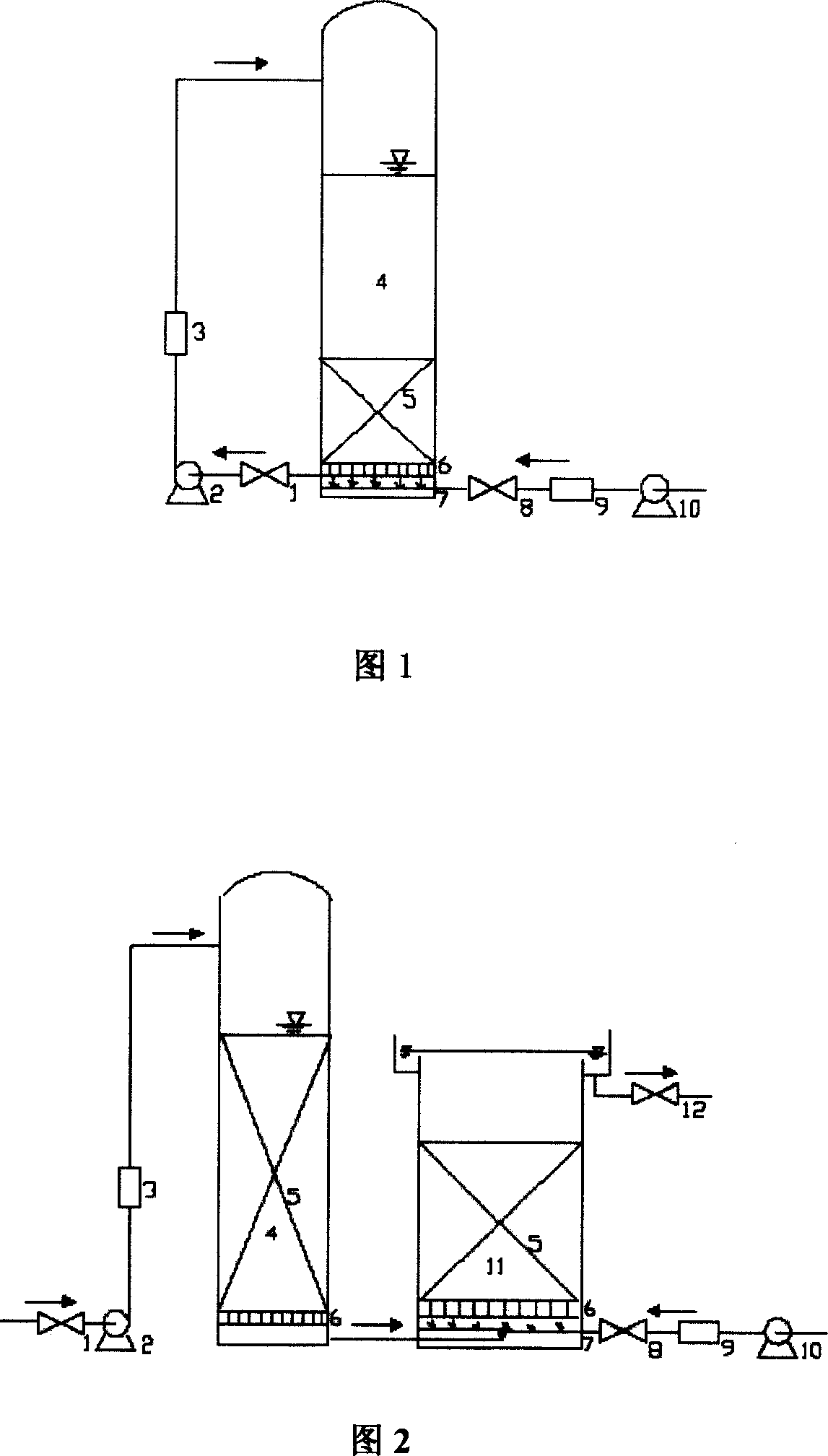Anoxybiotic/aerobic two-section internal electrolysis organic waste water treating method
A technology of organic wastewater and internal electrolysis, which is applied in the field of water treatment, can solve the problems of large area occupied by the device, easy compaction of fillers, and large sludge production, and achieve the effects of reduced treatment costs, reduced iron slag, and accelerated mass transfer
- Summary
- Abstract
- Description
- Claims
- Application Information
AI Technical Summary
Problems solved by technology
Method used
Image
Examples
Embodiment 1-13
[0025] The following examples 1-13 are advanced treatment of landfill leachate with the single tank static flow process of the present invention
[0026] The waste water was taken from the landfill leachate treated by mineralized garbage bed in Shanghai Waste Laogang Landfill, with a COD of 538 mg·L -1. The waste water was left in the internal electrolysis device for 30 minutes in anoxic and aerated states respectively, and the COD value of the supernatant was measured after the effluent was settled by adding alkali.
[0027] The influence of different initial pH values of embodiment 1-4 on COD removal rate
[0028] Regulate landfill leachate initial pH to 3.0 (embodiment 1), 5.0 (embodiment 2), 7.0 (embodiment 3), 8.5 (embodiment 4) with acid, be 1: 2 with solid-liquid ratio, aeration rate is 100L·h -1 Carry out test, removal rate is as shown in table 1:
[0029] Table 1 Effect of different initial pH values on COD removal rate (%) of landfill leachate
[0030] ...
Embodiment 5-8
[0032] Embodiment 5-8: Effect of different solid-liquid ratios on COD removal effect
[0033] For wastewater with an initial pH of 5.0, the aeration rate is 100L h -1 , be respectively: 1: 1 (embodiment 5), 1: 2 (embodiment 6), 1: 3 (embodiment 7), 1: 4 (embodiment 8) test with solid-liquid ratio. The results are shown in Table 2:
[0034] Table 2 Effect of different solid-liquid ratios on COD removal rate (%) of landfill leachate
[0035]
[0036] As the solid-liquid ratio decreases, the removal effect decreases. This is because with the decrease of the solid-liquid ratio, the contact area between the iron filings activated carbon and the wastewater decreases, and the micro-electrolysis reaction in the unit wastewater decreases, resulting in a decrease in the quality of the effluent. And in the test, the COD removal effect of the solid-liquid ratio of 1:1 and 1:2 is not much different, so it is economical and reasonable to adopt the solid-liquid ratio of 1:2.
Embodiment 9-12
[0037] Embodiment 9-12: the influence of different aeration rates on the removal effect
[0038] Adjust the pH of the influent to 5.0, set the solid-liquid ratio to 1:2, and adjust the aeration rate to 0L·h -1 (Example 9), 50L h -1 (Example 10), 100L h -1 (Example 11), 150L h -1 (Example 12) Test was carried out.
[0039] The test results are shown in Table 3:
[0040] Table 3 Effect of different aeration rates on COD removal rate (%) of landfill leachate
[0041]
[0042] The research results show that under acidic and oxygenated conditions, the internal electrolysis reaction rate can be increased and the wastewater treatment effect can be increased.
PUM
| Property | Measurement | Unit |
|---|---|---|
| particle diameter | aaaaa | aaaaa |
Abstract
Description
Claims
Application Information
 Login to View More
Login to View More - R&D
- Intellectual Property
- Life Sciences
- Materials
- Tech Scout
- Unparalleled Data Quality
- Higher Quality Content
- 60% Fewer Hallucinations
Browse by: Latest US Patents, China's latest patents, Technical Efficacy Thesaurus, Application Domain, Technology Topic, Popular Technical Reports.
© 2025 PatSnap. All rights reserved.Legal|Privacy policy|Modern Slavery Act Transparency Statement|Sitemap|About US| Contact US: help@patsnap.com

